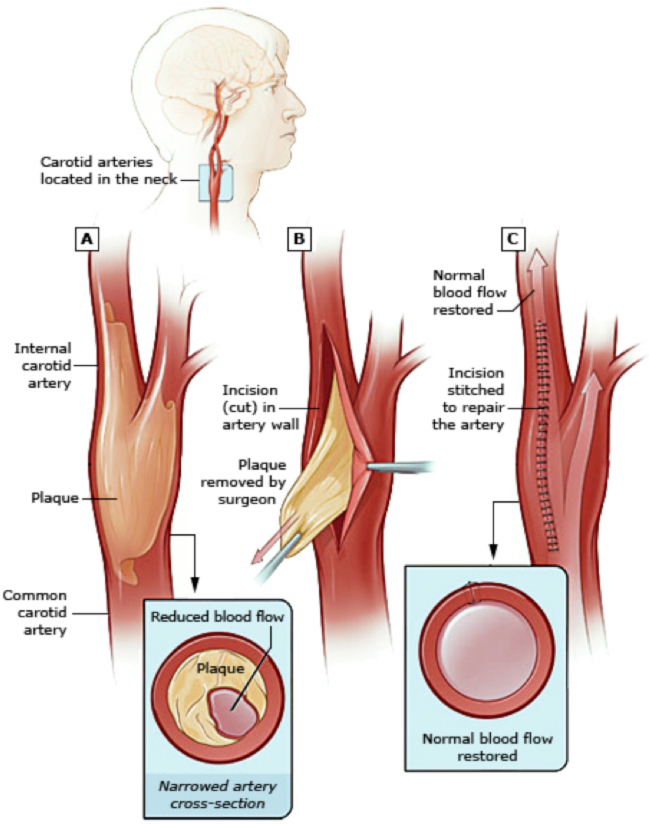Carotid Artery Disease & Stroke
What is carotid artery disease? — Carotid artery disease is a condition that can increase a person’s risk of having a stroke. The condition does not usually cause symptoms. It happens when fatty deposits called plaque build-up inside 2 blood vessels called the “carotid arteries.” These are the main blood vessels that bring blood to the brain. When plaque forms in these arteries, the arteries can become narrow.
What are the symptoms of carotid artery disease? — Carotid artery disease can cause strokes and TIAs (described below), though it does not always cause symptoms.
Strokes – A stroke is when a part of the brain dies because it goes without blood and oxygen for too long. Carotid artery disease can lead to strokes, because blood clots can form inside the narrowed artery. Then the clots and other material from the fatty plaque can travel to the brain and clog smaller arteries. Some people recover from strokes without lasting effects or with only minor problems. But many people have serious problems after a stroke. After a stroke, some people are:
- Unable to speak or understand speech
- Paralyzed on one half of their body
- Unable to dress, feed, or take care of themselves
TIAs – TIA stands for “transient ischemic attack.” TIAs are basically strokes that last only a short time. But they do not cause brain damage. TIAs happen when a blood vessel in the brain gets clogged briefly and then reopens. People who have TIAs can have the symptoms of a stroke, but the symptoms go away in a short time. People who have TIAs are at very high risk of having a full-blown stroke.
Is there a test for carotid artery disease? — Yes. surgeons can listen to each carotid artery with a stethoscope. They do this to check for a swishing sound that occurs when the artery is partly blocked. But to be sure, surgeons can also use one of the following tests, which create pictures of the arteries:
- Carotid duplex ultrasound – This test uses an ultrasound probe to create pictures.
- Computed tomography angiography (CTA) – This test uses a special kind of X-ray called a CT scan. Before having the scan, people get an injection of a chemical that makes the arteries show up more clearly.
How is carotid artery disease treated? — Treatments for carotid artery disease focus mostly on preventing stroke. Treatments can include:
- Lifestyle changes – People can reduce their risk of stroke by:
- Quitting smoking if they smoke
- Being active
- Losing weight if they are overweight
- Eating a diet low in fat and cholesterol and high in fruits, vegetables, and low-fat dairy foods
Medicines – Different people need different medicines to reduce their chances of having a stroke. In general, the medicines that can help prevent strokes include:
- Medicines to lower blood pressure
- Medicines that lower cholesterol
- Medicines to prevent blood clots such as aspirin
Surgery – Surgeons can do surgery to remove plaque from the carotid arteries. This is called “carotid endarterectomy.” This treatment is most appropriate for people who have had a TIA or stroke and who have a lot of plaque in their carotid arteries. It is also appropriate for some people who have not had a stroke or TIA but who have a lot of plaque in their carotid arteries.
Which treatment is right for me? — The right treatment for you will depend on:
- Whether you have already had a stroke or TIA that seemed to be caused by your carotid artery disease
- How much of your carotid artery is blocked off by plaque
- How old you are
- Your gender
- Whether you have other health problems besides carotid artery disease


